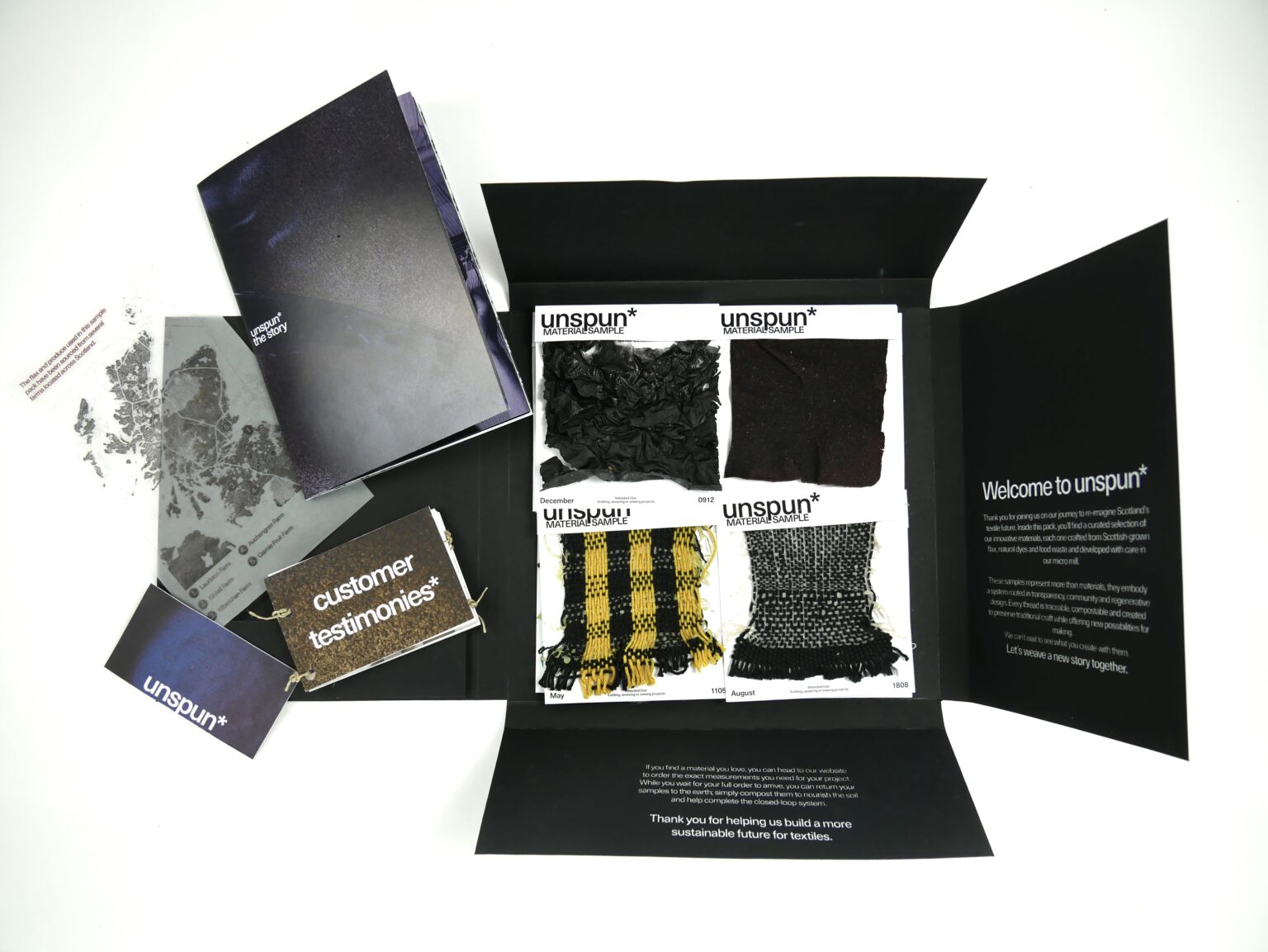Innovation & Technology Product Design
Aisling Walsh

I am a designer focused on connecting people, heritage and place through sustainable, research-led design. Rooted in material innovation and systems thinking, my practice bridges traditional craft with forward-thinking approaches to challenge extractive models and build regenerative alternatives. I’m driven by a belief that design should serve people and the planet, empowering communities, honouring local knowledge and reviving cultural practices through accessible, meaningful experiences. My work explores the relationship between land, material and identity, using storytelling and co-creation to reimagine how we live, make and connect. I see design as a tool not just for making things, but for shifting perspectives, rebuilding trust in slow, place-based systems and creating lasting social and environmental value.


Self Initiated // Unspun*
This project explores the potential of food waste and flax to form a new generation of bio-based yarns, reimagining how materials are made, used and valued. At its core, this work isn’t just about creating a sustainable yarn, it’s about developing a closed-loop system that connects material innovation with cultural preservation, local craft and regenerative practice.
The bio-yarn I’ve developed is made from vegetable-based dyes, flax, sodium alginate, sunflower oil, vegetable glycerin and is solidified using a calcium carbonate solution. All of these components are natural, renewable and carefully selected to create a soft, flexible and workable yarn that is entirely home compostable at the end of its life, returning safely to the soil and completing the cycle.
While others have explored food waste or flax independently, what makes this work innovative is the ecosystem around the material: a proposed ‘mill meets lab’ system that works on a local, human scale. It reconnects growers, makers and communities, creating a circular, transparent process that’s traceable from soil to final textile. This ‘mill’ becomes both a site of production and education, where people engage with the story behind their materials, learn traditional techniques and experiment with new ones. By embedding the material within this system, I aim to tackle several urgent challenges: material waste, loss of craft knowledge and a disconnect between consumers and production. Textile production is often invisible, industrial and extractive. This material and the process behind it, flips that model. It’s small-scale, visible and built on relationships. Equally important to this material’s development is its role in preserving Scottish craft traditions.
Techniques such as spinning and natural dyeing are at risk of being lost due to industrialisation and globalisation. My project seeks to revitalise these practices using future-facing materials. The bio yarn is not only usable by artisans, it invites them to co-create with it. Through workshops and prototyping, I’ve seen firsthand how the material encourages makers to explore new ways of working with heritage processes. The result is a dialogue between old and new, where tradition becomes a tool for innovation rather than nostalgia. Looking ahead, I believe this material and the system that supports it has real commercial potential. It offers brands and designers a local, low-impact alternative to synthetic and imported fibres, with a powerful narrative built in. From slow fashion to interiors and art textiles, the applications are broad.
As part of this vision, I imagine an open-source infrastructure where regional ‘mills’ can emerge in different contexts, adapted to local materials and crafts, but grounded in the same values of transparency, regeneration and care.
This isn’t just a yarn, it’s a proposition: What if the future of textiles wasn’t global, fast and linear but local, adaptive and circular? Through this project, I aim to prove that materials can be both innovative and regenerative, where nothing is wasted and everything returns to the land.
This project resulted in me being awarded the Material Innovation Award 2025, awarded to me by Weavers of Glasgow.
Creating Future Experiences // Collaborative Project // Parallel Paths
Parallel Paths explores the intertwined futures of urban and rural lives in 2035, imagining how these distinct lifestyles can exist in balance. In a modern world, where urban centralisation has redefined the relationship between city and rural communities as industry, population and cultural changes being at the forefront of our imagined world. This project speculates on life in 2035, asking how changes in rural areas will shape personal well-being and address the growing inequities individuals face. By understanding this interdependence, we can act now to create an urban and rural future where both thrive in a reciprocal relationship.
Creating Future Experiences // Syncretic Soil
Set in the rural Scottish community of Knoydart in the year 2035, this speculative design project explores how shared rituals, storytelling and environmental awareness can bring people together in a time of cultural shift. As increasing urbanisation and government incentives drive more people to settle in rural areas, communities face new challenges around identity, integration and a loss of heritage.
At the centre of the project is soil is seen not only as a natural resource but as a cultural and symbolic thread that connects food, memory, place and tradition. The project imagines a future Soil Festival, an annual event that creates space for residents, both long-time locals and newcomers, to come together through meaningful, creative engagement.
Through workshops, storytelling and interactive rituals, the festival encourages participants to connect with the land and with each other. Clay-making workshops use enriched soil to create expressive, plantable forms that represent personal identity. Storytelling sessions invite residents to share soil-inspired narratives, preserving culture and fostering empathy. The legacy of the festival is preserved in a growing archive housed in the community hall, holding artefacts and stories from each year as a testament to the community’s evolving identity.
What begins as a local initiative becomes a globally recognised model for collective living, environmental education and cultural celebration. Soil, often overlooked, becomes the medium through which people reconnect with the earth, with their heritage and with each other.

























